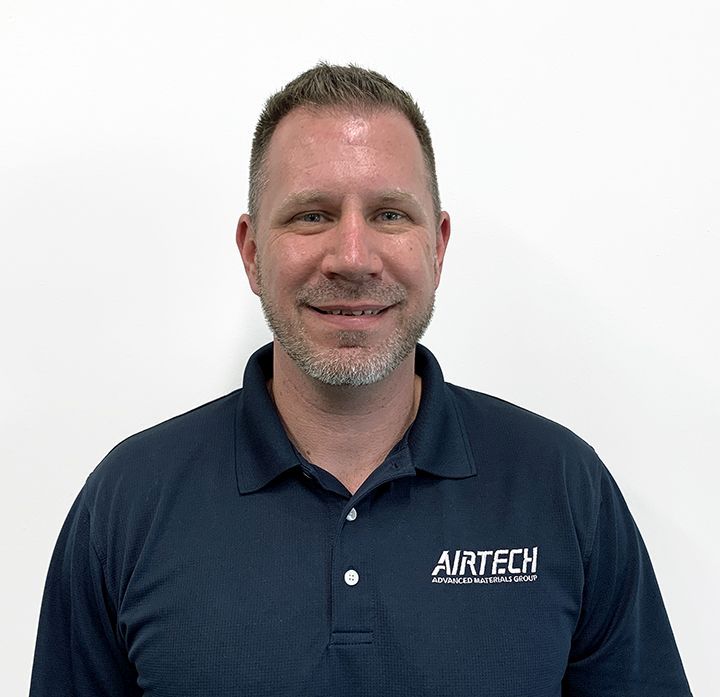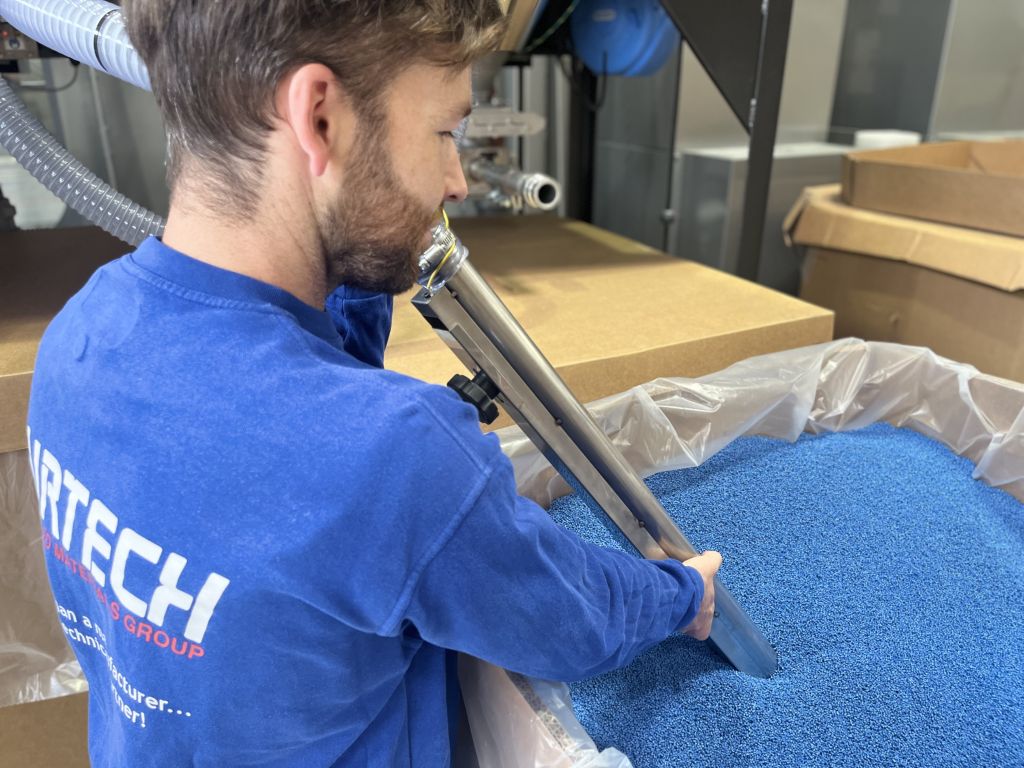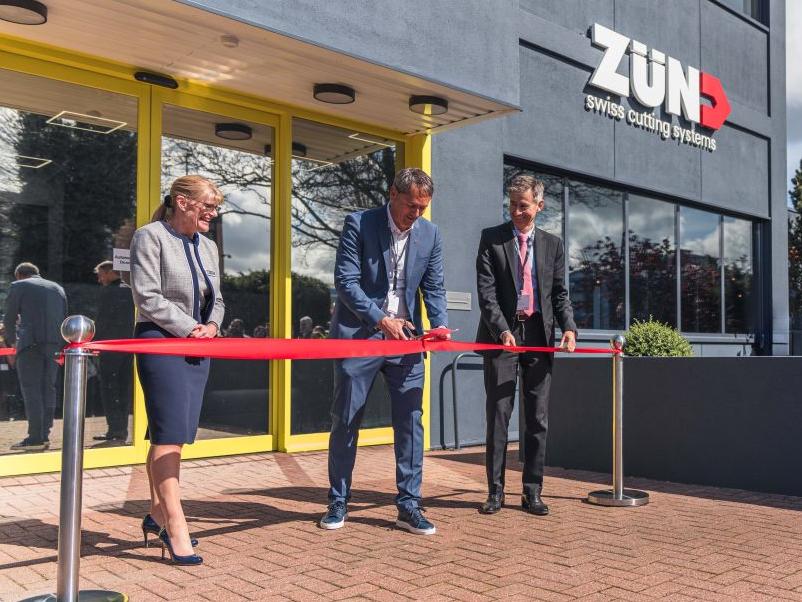Added dimensions for composite parts

In this Q&A session Gregory Haye, director of additive manufacturing at Airtech, discusses the company’s development of 3D printing processes and materials for moulds used in composite part production.
Airtech, has been at the forefront of composites technology for nearly 50 years, playing a key role in pioneering industry innovations. Today, it has over 800 employees worldwide and is the largest privately-owned manufacturer of vacuum bagging and composite tooling materials in the world.
The company supplies composite manufacturers worldwide in many sectors. Its comprehensive range of goods and services includes vacuum bagging films, release films, pressure-sensitive tapes, mould releases (non-liquid), peel plies, breathers and bleeders, sealant tapes, connectors and hoses, rubber, PTFE release fabrics, tooling prepregs and resins, carbon and glass reinforcements, 3D Print resins, and 3D Printed tooling.
At its Centres of Innovation in Springfield, Tennessee and Differdange, Luxembourg, the company uses additive manufacturing to develop its Print-Tech large-scale 3D printed composited tool service and Dahltram additive manufacturing resins.
Q) When did Airtech first start exploring the use of 3D printing as an additional manufacturing solution to the composite mould-making and tooling production?
Airtech officially launched its activities in additive manufacturing in the autumn of 2019. The concept was to use our company-wide knowledge and expertise in composites processing, auxiliary materials, tooling, and thermoplastic extrusion to bring a new technology to the commercial market in a way no one else could.

With our industry experience, plus the addition of key subject matter experts from the additive manufacturing world, we were able to quickly establish an internal ecosystem that supported our ability to offer printing services that were attractive to composite tooling customers as well as develop relevant resins for printing in a rapid way. We are unique in that we are the only resin manufacturer that can also develop materials and trial them internally to ensure their performance in printing and in the end use application. In this way, every resin or auxiliary product we offer the market has been evaluated internally to conform or exceed industry expectations before it is ever printed by a customer or machine manufacturer.
Our goal is to use our capabilities to support customer adoption of additive manufacturing using our qualified resin and other products either with us, with others or on their own printing equipment.
Q) What are the major benefits? More rapid production and turnaround? Design flexibility? Cost/material savings?
3D printed tooling can most commonly benefit the customer by offering a faster lead-time than conventional technologies. There’s no faster way to go from a CAD file to a near-net shape than printing the near-net form and its support structure in one step. In many applications where metallics would be used, the weight of the tool can be significantly less making transport or handling easier and safer for the workforce. Support structures, lifting and rigging points, air passages and mounting flanges for hardware can be designed and printed reducing part count and touch labour saving the customer time and money.
Q) What sectors are seeing the most demand for these services and products? Is there a growing awareness about the capabilities and applications of additive manufacturing?
Aerospace is Airtech’s largest global market segment. It is no surprise that aerospace tends to be the leader in technology development and adoption. We see this same trend in the additive tooling and resins we offer. Automotive interest is rapidly growing pushing development in multi-piece tooling and cost reduction. The other markets are still testing the waters, but typically are using low-tech old tooling products and processes that minimally meet their requirements.

The one common interest amongst all of the industries is recycling. All our additive resins and moulds/tools are 100% recyclable. Airtech has active work reclaiming printed scrap or retired printed moulds demonstrating how we can close the loop. Many of the technologies these industries use rely on foams, thermosets, or other multi-material processes that can be nearly impossible to reclaim.
Q) When it comes to your own manufacturing of LSAM moulds/tools, how do you work with customers to offer the best solutions and refine their needs?
The Airtech additive team works closely with our customers to help them understand the technology by walking them through some of the basics of design and manufacturing. We’ve developed some guides that help define the building blocks that outline the benefits and constraints. This information includes details about project workflow, design for manufacturing, coefficient of thermal expansion compensation, contact materials evaluation, and some application examples. Once we review the basics and understand what application the customer would like to address an initial assessment is done with the customer. We most commonly find customers that come with an example that they designed in their head based off a desktop-scale printer require a re-education on printing strategy. What is possible at 25cm scale does not translate to 1m scale. Ultimately, we ensure that all project requirements are communicated and understood which allows us to filter what material should be used, what the resulting print might look like, and how it could be orientated to manufacture.
Q) How do you achieve the surface finish requirements needed for the moulds and tooling?
The printed moulds and tools start as near-net printed shapes or structures then are machined by 5-axis CNC to achieve a highly accurate surface profile and finish. Typically, once off the machine, we are at an average of a 70-90Ra microinch surface roughness. This surface can then be easily sanded to achieve a common spec of 32Ra microinch with little effort. For applications that require a gloss surface the material can be further polished to the point where an A class surface can be achieved.
Q) Can you explain more about Airtech’s development of Dahltram and Dahlpram resins?
We found that no other resin suppliers had specifically addressed the needs and requirements of the tooling industry. When we develop a resin, we not only ensure its processability on every notable industry printer, but trial the materials in application. We put ourselves in the seat of the customer and will subject the material and/or a finished mould to the same workshop environment and processes to ensure that the resin is up to or exceeds industry expectations.

Our screening and trials include extensive contact materials testing with nearly everything we can get our hands on including various cleaners, sealers, release agents, thermoset resins and prepregs. One of our largest benefits to the market is we have proven that all our resins and tools can be vacuum integral with no other secondary processes as well as being high temperature autoclave capable while staying dimensionally stable. Our current demonstrator has achieved over 500 autoclave cures, meeting all common aerospace-level requirements.
Q) How do you see the future of this element of your business developing?
Airtech is committed to additive manufacturing and its growth in our business portfolio. We will continue to develop resins and other auxiliary products for the industry on an ongoing basis. Our focus is beyond just large format printers and includes all pellet-fed equipment at all scales. We already have print-surface product introduced for common FDM and UV curing type printers. This year, we will be demonstrating our line of repair and finishing solutions which address day-to-day use and service of tooling.









